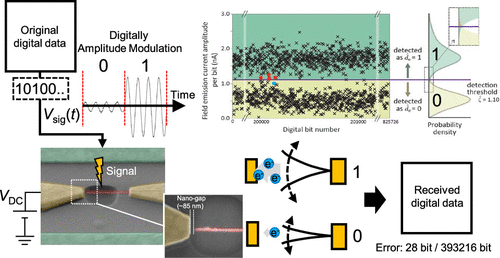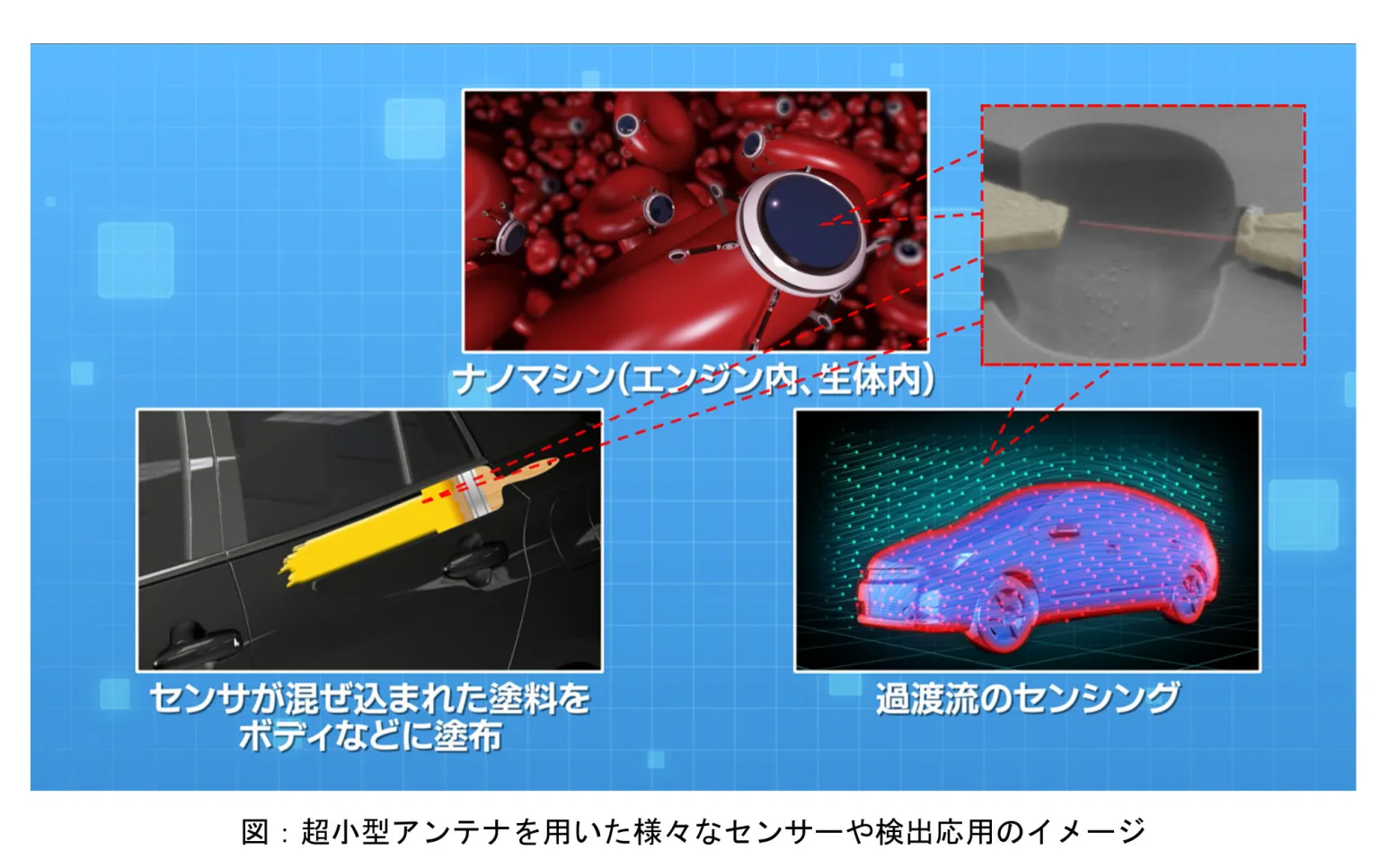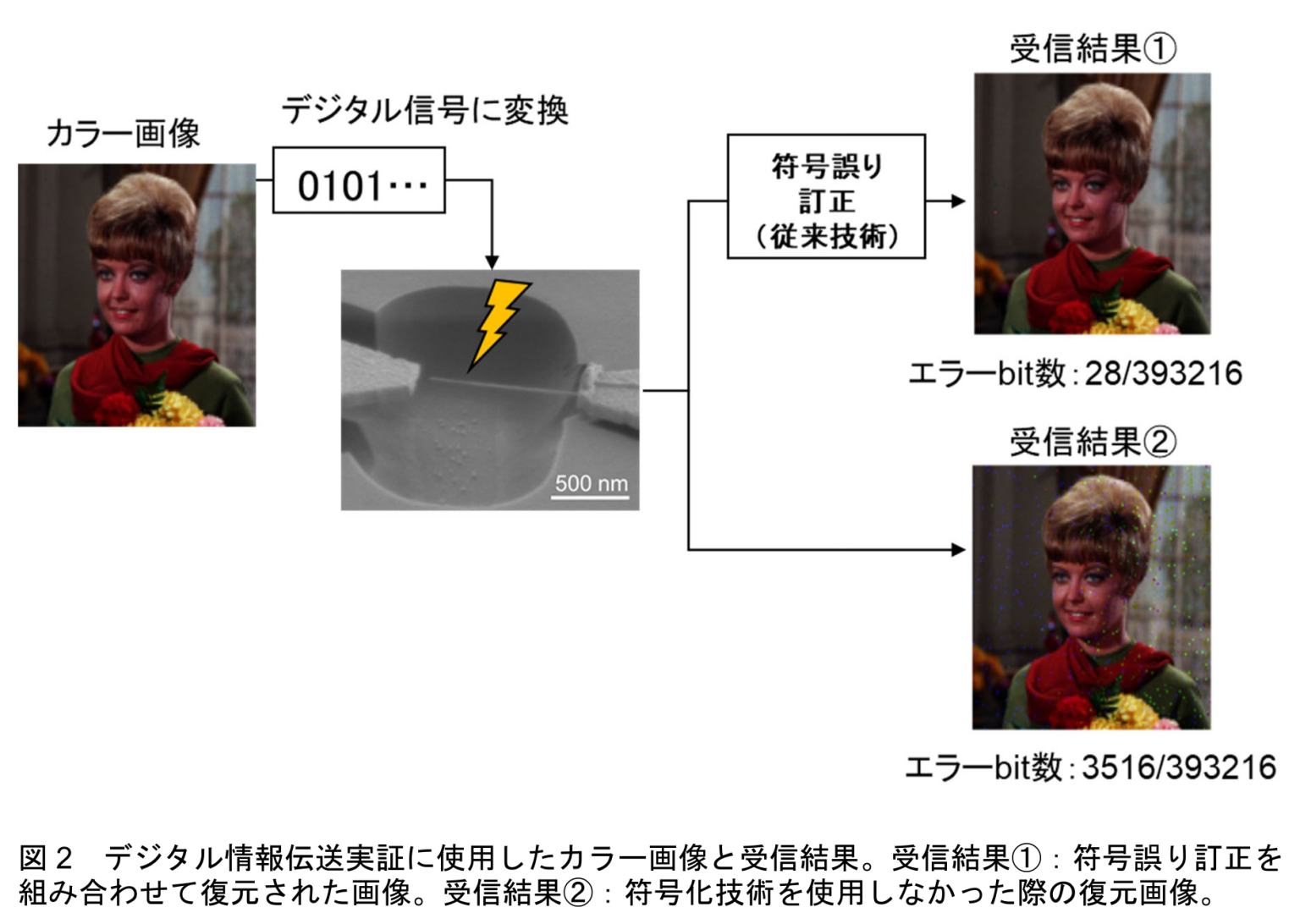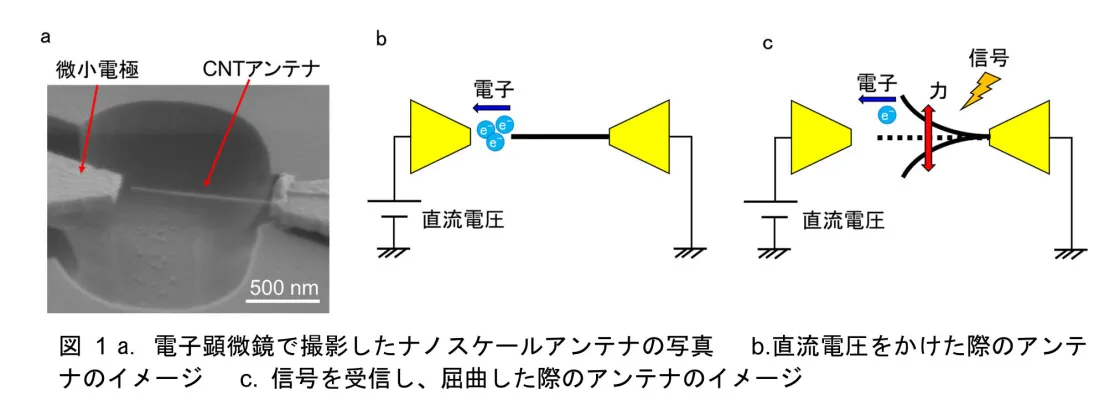



名古屋大学:超微小アンテナを開発:Wi-Fiに対応(動画):
Nagoya Univ: Developed ultra-small antenna: Compatible with Wi-Fi:
名古屋大学:开发超小型天线:兼容Wi-Fi
ー1nmのカーボンナノチューブ1本で作製ー
名古屋大学:
11月17日、
- カーボンナノチューブ1本で、
- 大規模デジタルデータを受信できる、
- 極微小アンテナを開発した。
ナノスケールでありながら、安定した高精度のデータ伝送を実現できる。
カーボンナノチューブとは:
六角形の炭素ネットワークが直径約1nm(10億分の1m)の円筒状になったもの。
名古屋大学未来材料研究所
豊田中央研究所研究員の共同研究。
- IoT利用拡大により、
- 様々な情報を同時に高精度で、
- 検知する必要がある。
1システムに、多数のセンサーを設置する必要が生じてきた。
そのため、センサーの小型化が求められている。
それがこの研究の背景となっている。
超微小アンテナの特性:
電磁波を機械的な振動に変え、それを電気信号に変換するというもの。
高い機械強度と優れた電気特性を持つカーボンナノチューブを使う。
ナノスケールにまで小型化が可能になった。
通信速度は70Mbps:
現在主流のWi-Fi環境(80MHzの帯域幅)にも対応可能。
通信速度は70Mbpsという十分な性能を発揮する。
超微小アンテナの用途:
画像データやビデオ通話のような大容量データ通信への応用できる。
また、生体内や大気中の情報などを直接検出できる
TechCrunch Japan
https://jp.techcrunch.com/2021/11/18/nagoya-univ-cnt-antenna/
Carbon Nanotube-Based Nanomechanical Receiver for Digital Data Transfer
ACS Applied Nano Materials
Abstract
The evolution of carbon nanomaterials can provide tremendous advantages in sensing, computation, and functional materials.
A carbon nanotube (CNT)
has outstanding thermal and electrical conductivity features and is one of the most promising nanoscale carbon materials.It has a hardness of up to 1 TPa.
Exploiting these features, nanomechanical systems with CNTs
have been reported to achieve ultrasensitive sensors for mass, force, and electromagnetic waves owing to their outstanding elastic and electric properties.
Some research groups
have attempted to achieve digital data transfer in potential nanoscale wireless terminals with carbon nanomaterials.Although conceptual demonstrations have been reported,
the fundamental capability of the transfer, particularly in the presence of noise, is yet to be explained.
Here,
we experimentally demonstrate for the first time thatan ultrasmall digital receiver with a nanomechanical nanoantenna can transfer a vast amount of digital data, up to 1 Mbit, even in the presence of noise.
We successfully transfer a digital image data with 393 216 bits.
This demonstration proves that
the data-transfer capability is close to the theoretical limit established in information theory and channel capacity.This small but robust nanomechanical receiver
will contribute to the forthcoming data-oriented age of Internet of things (IoT)- and artificial intelligence (AI)-based systems.